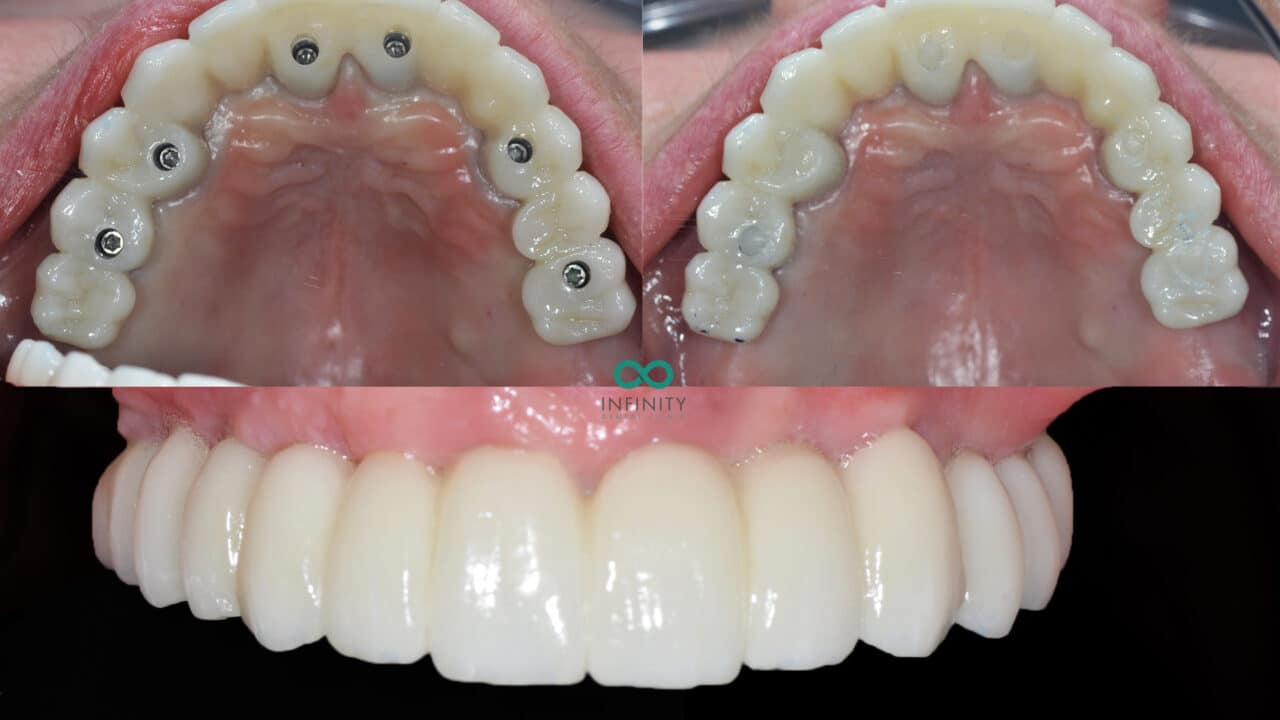Get This Report about Dental Sense
Table of ContentsThe Dental Sense PDFsAll about Dental SenseThe smart Trick of Dental Sense That Nobody is DiscussingHow Dental Sense can Save You Time, Stress, and Money.
are medical tools operatively implanted right into the jaw to bring back a person's ability to eat or their look. They provide support for artificial (phony) teeth, such as crowns, bridges, or dentures. When a tooth is shed due to injury or illness, an individual can experience problems such as quick bone loss, faulty speech, or changes to chewing patterns that lead to discomfort.Dental dental implant systems include a dental implant body and oral implant abutment and may likewise consist of a joint fixation screw. Same day dental implants. The oral implant body is operatively put in the jawbone instead of the tooth's root. The dental implant joint is generally connected to the implant body by the joint fixation screw and expands through periodontals into the mouth to support the connected artificial teeth
Smoking may influence the recovery process and reduce the long-term success of the dental implant. The healing process for the dental implant body may take numerous months or longer, throughout which time you typically have a momentary abutment instead of the tooth. the oral implant procedure: Thoroughly adhere to the dental hygiene guidelines provided to you by your dental copyright.
What Does Dental Sense Mean?
Implant failing can result in the requirement for an additional surgery to deal with or replace the implant system. Recovers the capacity to chew Restores cosmetic appearance Assists maintain the jawbone from shrinking because of bone loss Preserves the health of the bordering bone and gum tissues Aids keep adjacent (neighboring) teeth stable Boosts lifestyle Damages to surrounding all-natural teeth during dental implant placement Injury to the surrounding tissues throughout surgery, such as sinus perforation Injury during surgical treatment (for example, fracture of bordering jawbone) Inadequate function, such as really feeling like the teeth do not attack together generally A sensation that the tooth is loosened or turning in location arising from an abutment screw loosening up Implant body failing (looseness of the dental implant body) due to systemic infection, which may be much more most likely in patients with unchecked diabetes because of neighborhood infection in bone and gums supporting the dental implant body due to delayed recovery, which might be most likely in patients that smoke Difficulty cleaning up the gums around the dental implant, leading to inadequate oral health Neglected periodontal condition Post-surgical pins and needles due to nerve impingement or damages Constantly inform health and wellness care service providers and imaging technicians that you have dental implants prior to any kind of magnetic resonance imaging (MRI) or x-ray procedures.
FDA is not familiar with any Our site type of unfavorable events reported for MRI or x-ray treatments with oral implants. Oral implants systems are normally constructed from products that adhere to worldwide consensus criteria of the International Organization for Standardization (ISO) or ASTM International. These criteria have details of what makes a secure material.

An oral implant is a framework that replaces a missing out on tooth. With screw-like devices, the specialist inserts a dental implant right into the jawbone, and it functions as an anchor for a synthetic tooth, called a crown. A device called an abutment links the synthetic tooth to the dental implant. The crown is personalized to fit the person's mouth and match the color of their teeth.
An Unbiased View of Dental Sense
Some people are not eligible for oral implant surgical treatment. It is for dental doctors to operate people with: severe illnessuncontrollable metabolic diseasebone or soft tissue condition or infectionIf these issues are settled, an individual can have the surgical procedure. In, oral specialists avoid from operating on people with: If individuals with any of the above undergo oral implant surgery, there is a higher risk of the implant stopping working.

Oral implant surgery is a personalized procedure. Provide you time to heal. Attach the blog post and final crown, bridge or denture.
Next, your surgeon will carefully position the dental implant right into your jaw. If your dental implant is near the front of your mouth, your dental practitioner will certainly make a short-term tooth for you to wear up until you recover.
Unknown Facts About Dental Sense
During the recovery phase, your jawbone must fuse to the oral implant. This process can take anywhere from 3 to 9 months.
When your implant heals, your dental expert can connect the abutment (small port blog post) and your final repair (crown, bridge or denture). This usually takes concerning one hour to finish and might call for a second small surgical procedure. You shouldn't feel any type of discomfort throughout your dental implant procedure since your service provider will make use of medicine to numb your gum tissues.
Comments on “A Biased View of Dental Sense”